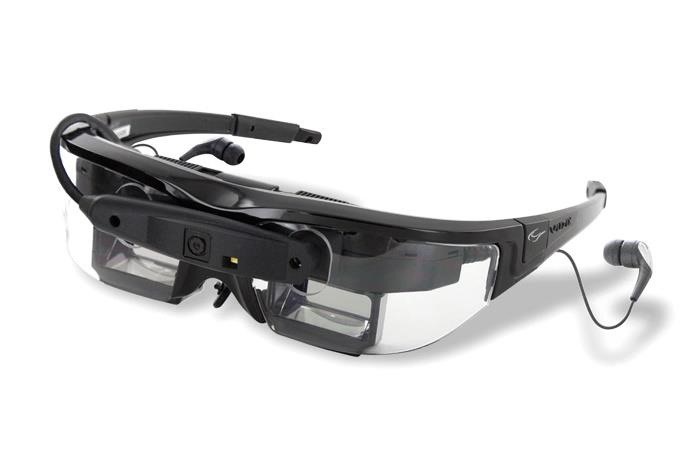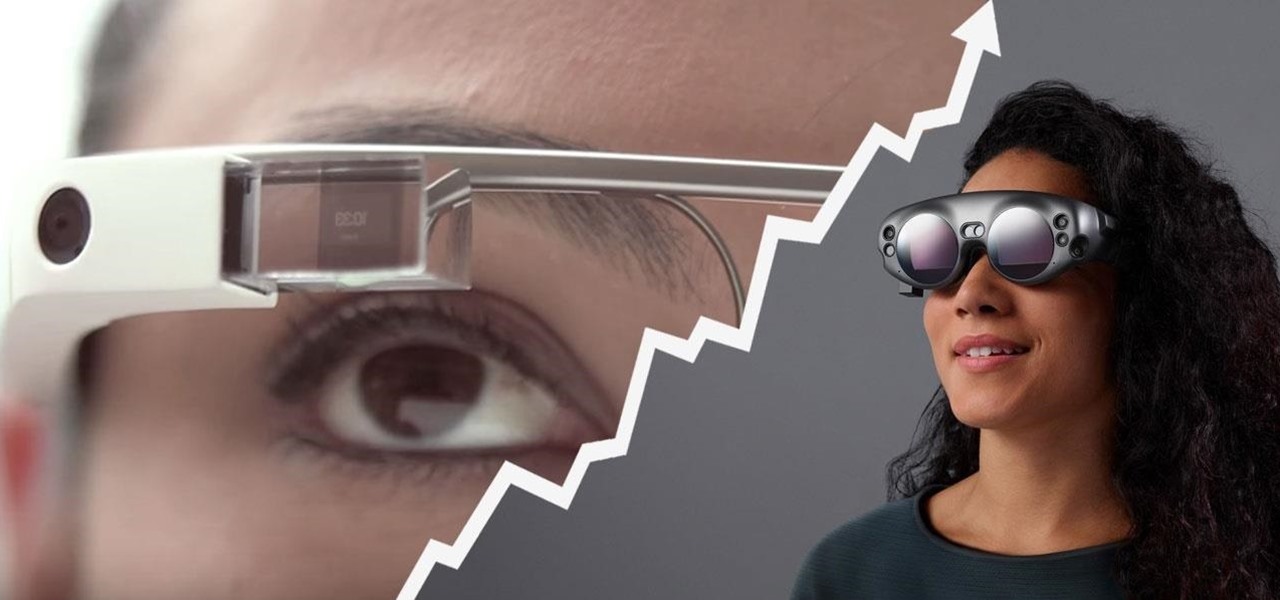The reveal of Magic Leap One: Creator Edition brought with it some insight into the path the device took from prototype to "final" design.
By comparing notes with the Rolling Stone article on Magic Leap with other reports on comparable milestones, we get a clearer picture of where the leaders in the industry stood in terms of augmented reality development at various points in time.
While the roots of the industry reach back to 1997, our timeline begins with work on the headset that introduced augmented reality to the public consciousness in 2009. The pace of innovation is slow at first, but the pace picks up starting in 2014.
2009
Google establishes its Google X lab to prototype advanced "moonshot" technologies such as robots and driverless cars. The first project to eventually emerge from the lab is a wearable computer that will become known as Google Glass.
2010
Vuzix, founded in 1997 by Paul Travers as a military contractor for night vision systems, launches its first AR headset, the STAR 1200. The device included see-through displays and a 1080p camera mounted atop its frames. It was capable of head tracking at three degrees of freedom.

2011
Rony Abovitz founds the company Magic Leap. Within a year, the company is reportedly able to trick the human brain into seeing a single floating pixel using its lightfield display technology.
2012
Google introduces Google Glass with a skydiving stunt at Google I/O 2012.
In September of 2012, Microsoft began work on its own augmented reality headset that would enable people to "collaborate, communicate, create, and learn by providing new ways to visualize and interact with 3D data." About 20 engineers and designers began working on a prototype of what would be known as HoloLens.

2013
In February of 2013, Google begins accepting applications for the Glass Explorer Program, with devices selling for $1,500 a piece.

After launching its Kickstarter campaign on May 17, Meta Company raises more than $190,000 by June 16 via for its Meta 1 developers kit, which is shipped to backers by Jan. 26, 2015.

Meanwhile, Magic Leap starts building its first working prototype, which is called the Bench.
2014
Google marches forward with Google Glass, expanding the Explorer Program to all interested parties in February of 2014.
On Sept. 8, DAQRI unveils its industrial-focused Smart Helmet, with 3D depth sensor and 360-degree navigation cameras that enable object recognition and environmental mapping.

In October, Magic Leap emerges from stealth mode to announce its second funding roundof $542 million.
2015
On Jan. 21 of 2015, Microsoft introduces HoloLens 90 minutes into its Windows 10 launch event. While the company shows the public what the final design will look like (or very close to it), behind the scenes Microsoft also shows off working prototypes of the holographic computer, where no photographs were allowed. Alas, the prototype was eventually discovered in a promotional video.
Osterholt Design Group (ODG), another company founded for military applications, introduces its own prototype smartglasses at CES in January and follows that up at AWE (Augmented World Expo) in June with the release of its R-7 SmartAR Glasses for the enterprise market with a $2,750 price tag.

At the same time, Magic Leap was working on its own AR headset prototype, referred to internally as "cheesehead" (as illustrated below).


While 2015 began several chapters in the augmented reality saga, it closed another, as Google shuttered the Glass Explorer Program on Jan. 15.
2016
Microsoft begins making HoloLens available for purchase to approved developers.

Also, Lenovo launches the Phab2 Pro, the first smartphone to support the Google Tango AR platfform. While not a headset, it's the first consumer device to include depth sensors that enable room mapping and markerless tracking.
2017
AR hardware makers continue to focus on the enterprise market with new hardware. DAQRI unveils its Smart Glass at CES in January and begins shipping to customers in November. Vuzix makes its M300 Smart Glasses available for anyone to order by June. Google Glass also returns to the spotlight, albeit a dimmer one than its first iteration, with an Enterprise Edition in July.



ODG courts consumer and commercial customers, unveiling the R-8 for the former and the R-9 for the latter at CES in January. The company follows that up with a heavy-industrial iteration of its R-7 model at AWE in june.



After overcoming production issues, Meta ramps up shipping of Meta 2 orders over the course of 2017, while the device's operating environment, called Meta Workspace, wins the Best in Show award at AWE 2017 in June.
In December, Vuzix begins accepting pre-orders for developer kits of its own consumer-centric smartglasses product called the Blade.

Finally, the Magic Leap One: Creator Edition, an augmented reality headset tethered to a wearable computer, is revealed in pictures just ahead of Christmas. The company also reveals that it will begin shipping the device in 2018.

2018
After years of rumors and anecdotal reports, Magic Leap finally releases the Magic Leap One: Creator Edition on Aug. 8, the anniversary of the death of Jerry Garcia, one of the musical inspirations driving the company's CEO, Rony Abovitz.
Priced at $2,295, the untethered AR system comes in three component parts, the goggles (called Lightwear), the hip-mounted computer (Lightpack), and the remote control (Control). Early reviews refer to it as a better version of the HoloLens with a larger field of view, sleeker design, and a robust software ecosystem.

2019
Microsoft finally updates its pioneering augmented reality headset, the HoloLens, with the HoloLens 2. The completely revamped device delivers increased field of view, lighter overall weight, and vastly improved hand tracking, making it the best augmented reality headset available across all companies to date.
What else does the industry have in store for 2020 and beyond? Check back here, as we'll update the timeline as it progresses.
Just updated your iPhone? You'll find new features for Podcasts, News, Books, and TV, as well as important security improvements and fresh wallpapers. Find out what's new and changed on your iPhone with the iOS 17.5 update.























Be the First to Comment
Share Your Thoughts